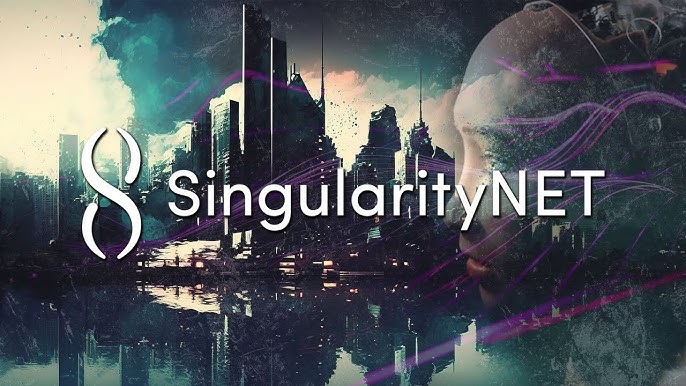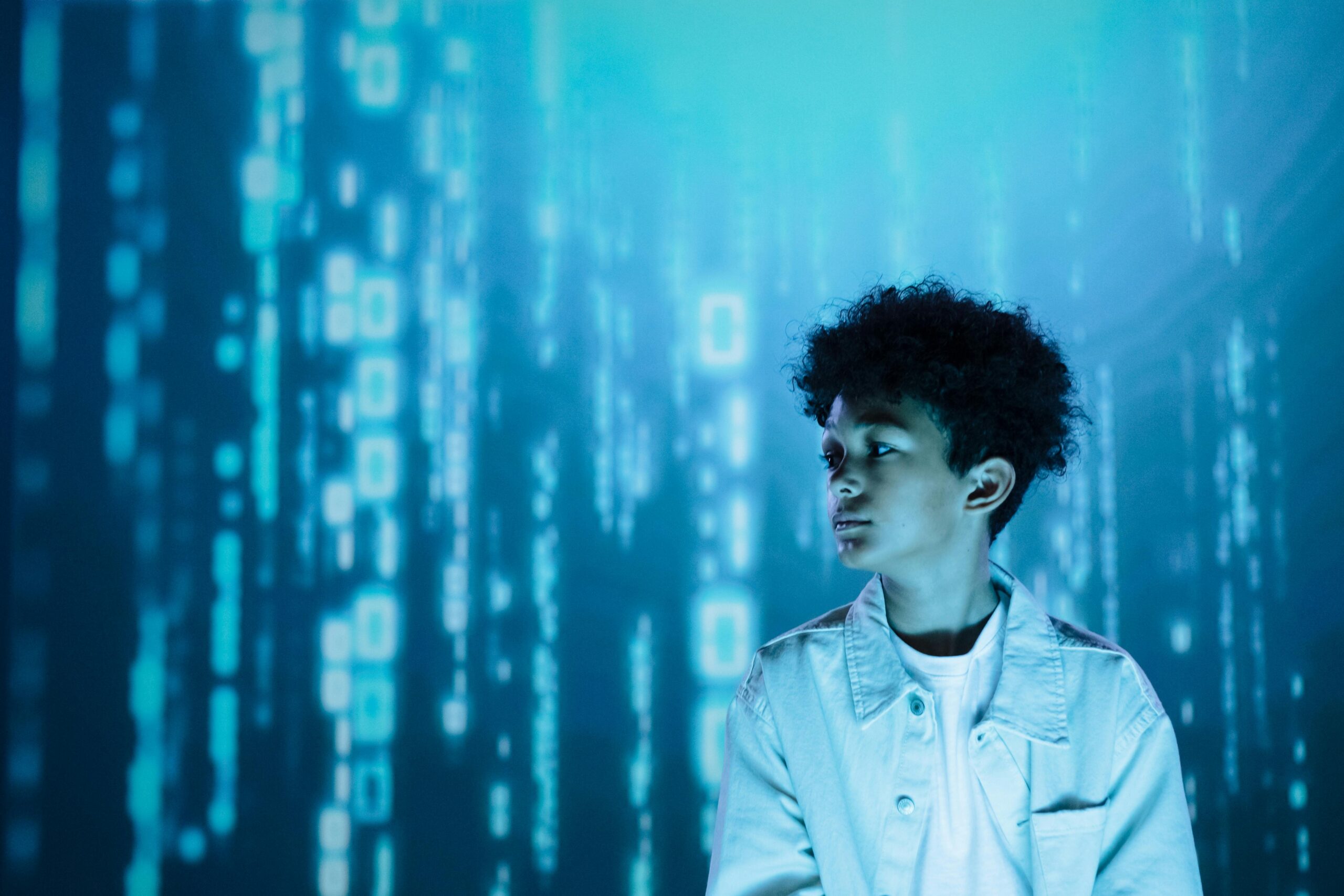Let’s dive into some notable examples of key players merging blockchain technology with AI.
While decentralized AI is still in the early stages, many blockchain projects are laying the foundation for a future where AI is not controlled by a few corporations or governments.
Some initiatives are pushing the boundaries of decentralized AI by creating ecosystems where data, computing power, and AI models can be shared and accessed in an open, transparent, and secure way.
These projects are already pioneering the possibilities of how blockchain and decentralized networks can reshape the AI landscape, but for widespread adoption to occur, further advancements in technology, regulatory frameworks, and public awareness will be necessary.
As the global economic landscape continues to shift, decentralized AI may become an essential tool for empowering individuals and businesses alike.

1. SingularityNET
Vision: The goal is to create a global, decentralized AI network that breaks down the barriers posed by proprietary AI systems controlled by large corporations.
Overview: SingularityNET is one of the most well-known projects working on decentralized AI. It is a blockchain-based marketplace for AI services. The idea is to allow developers to share their AI models and services in a decentralized network, enabling anyone to access, create, and sell AI algorithms.
Key Features:
Decentralized Marketplace: It provides a platform where developers can monetize their AI services and models without relying on centralized intermediaries.
AI Collaboration: SingularityNET allows different AI systems to communicate and collaborate with each other, creating a more open and interoperable AI ecosystem.
Token Economy: The network uses its own native token, AGIX, to pay for AI services and transactions within the platform.
SingularityNET: SingularityNET lets anyone – create, share, and monetize AI services at scale. SingularityNET is the world’s first decentralized AI network.

2. Ocean Protocol
Vision: Ocean Protocol aims to create a data economy where AI is powered by decentralized data sources, empowering individuals and organizations to participate in AI development without centralized control.
Overview: Ocean Protocol is a decentralized data exchange protocol that aims to unlock data for AI and machine learning. It provides a decentralized marketplace for data providers and consumers, allowing AI developers to access datasets that can train their models.
Key Features:
Data Sovereignty: Ocean Protocol ensures that data owners maintain control over their data while still allowing it to be used by others in a decentralized manner.
Blockchain-Powered AI: By utilizing blockchain, Ocean enables transparent, secure, and trusted data sharing. This supports the development of AI models that can access decentralized datasets, which is essential for decentralized AI.
Privacy-Preserving: The protocol allows for the creation of privacy-preserving datasets and allows for AI models to be trained on those datasets without compromising privacy.

3. Fetch.ai
Vision: Fetch.ai aims to create decentralized systems where AI-powered agents can optimize various aspects of the economy, from logistics to energy use, without relying on centralized control.
Overview: Fetch.ai is a decentralized platform that aims to build autonomous “digital economies” using AI and blockchain. It combines machine learning, AI, and multi-agent systems to create a self-organizing decentralized network of digital agents.
Key Features:
Autonomous Economic Agents: Fetch.ai allows digital agents (powered by AI) to make decisions, trade, and interact within the platform autonomously.
Blockchain Integration: Blockchain ensures that all transactions between these agents are secure, verifiable, and transparent.
Optimizing Processes: It helps optimize complex systems like supply chains, energy grids, and transportation networks by enabling autonomous negotiation and decision-making.

4. DeepBrain Chain
Vision: DeepBrain Chain aims to make AI development more affordable and accessible by providing decentralized computing resources that are crucial for the training of AI models.
Overview: DeepBrain Chain is a decentralized AI computing platform built on blockchain. It focuses on providing affordable and scalable computing resources for AI developers by utilizing blockchain to create a distributed network of computing power.
Key Features:
Decentralized AI Computing: By pooling together computing resources from various contributors, DeepBrain Chain provides a marketplace for AI computing power. This makes it cheaper for AI companies to train models without relying on expensive centralized cloud services.
Data Privacy and Security: It also ensures that sensitive data can be kept secure and private while being used to train AI models, leveraging the decentralized nature of blockchain.
Token Incentives: The platform uses its own token (DBC) to incentivize participants to contribute computing resources or data to the network.
DeepBrain Chain: DeepBrainChain is the world’s first public artificial intelligence chain, creating a decentralized AI infrastructure.

5. Braintrust
Vision: Braintrust aims to disrupt the traditional hiring model, and as AI development becomes more decentralized, platforms like Braintrust could play a role in facilitating the development of AI by connecting distributed teams of professionals.
Overview: Braintrust is a decentralized talent network that connects businesses with skilled professionals. While it’s not purely AI-focused, the platform utilizes decentralized principles to match talent with opportunities and could have applications for decentralized AI workforce development in the future.
Key Features:
Decentralized Talent Matching: Braintrust uses blockchain to connect businesses with skilled professionals, allowing for trustless transactions without intermediaries.
AI and Smart Contract Integration: Braintrust integrates smart contracts to automate talent compensation and project completion, which could extend to AI model development in the future.
Braintrust: Braintrust connects companies with top technical talent to complete strategic projects and drive innovation.

6. Numerai
Vision: Numerai is a fascinating example of how AI can be decentralized and driven by individual contributions, even if it’s specifically for finance. The decentralized model could serve as a template for other industries that wish to build decentralized AI systems.
Overview: Numerai is a decentralized hedge fund that leverages AI and machine learning to predict financial markets. While its primary goal is financial prediction, the platform’s structure relies on decentralized principles and could pave the way for more decentralized AI applications in other sectors.
Key Features:
Data Science Marketplace: Numerai allows data scientists to build machine learning models and submit them to a central hedge fund, but it is powered by decentralized principles, including incentivizing participation with cryptocurrency.
NMR Token: The platform uses the NMR token to incentivize data scientists to contribute to its financial predictions.









